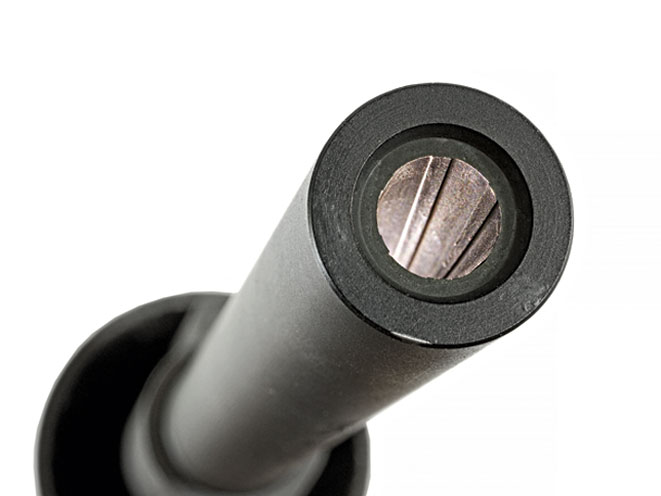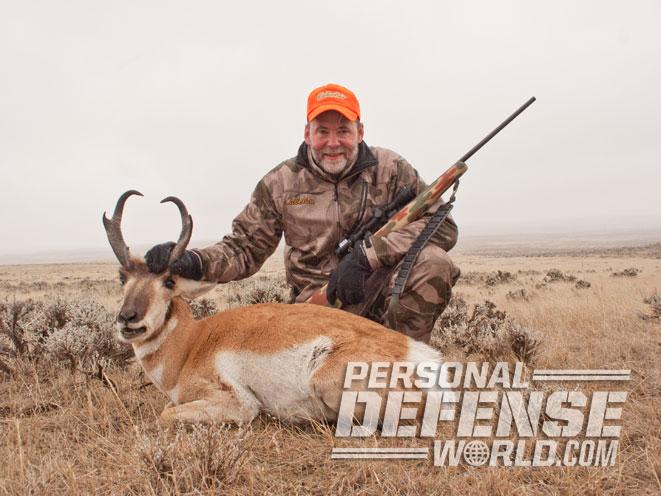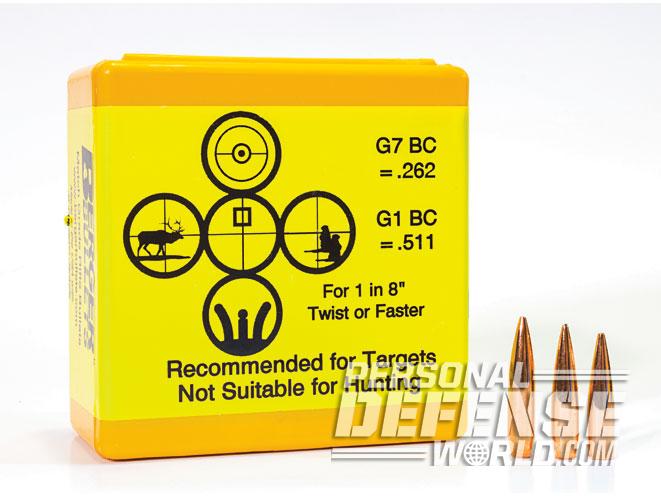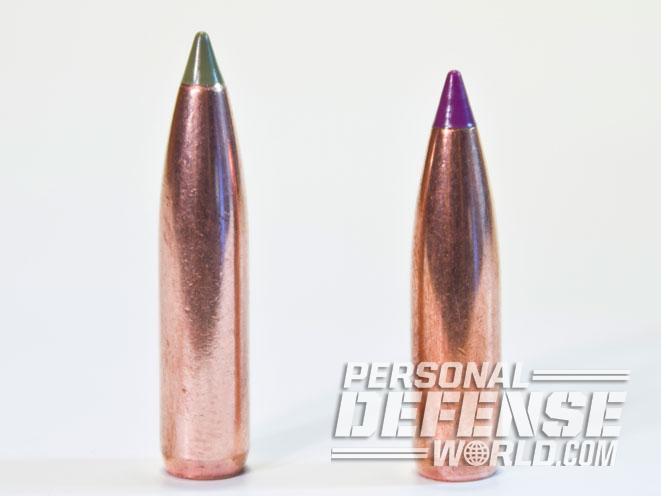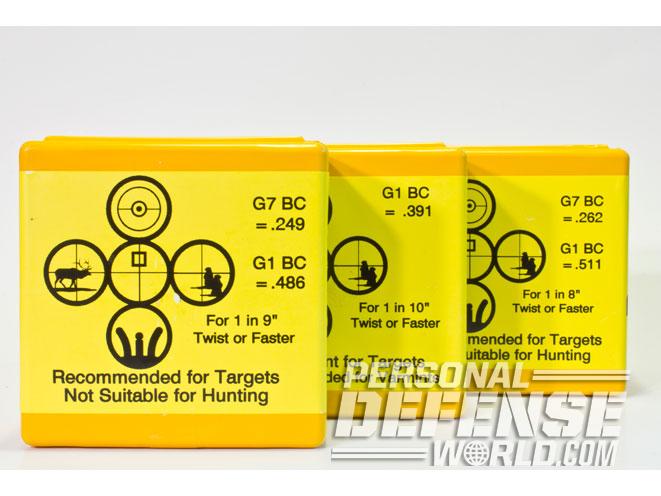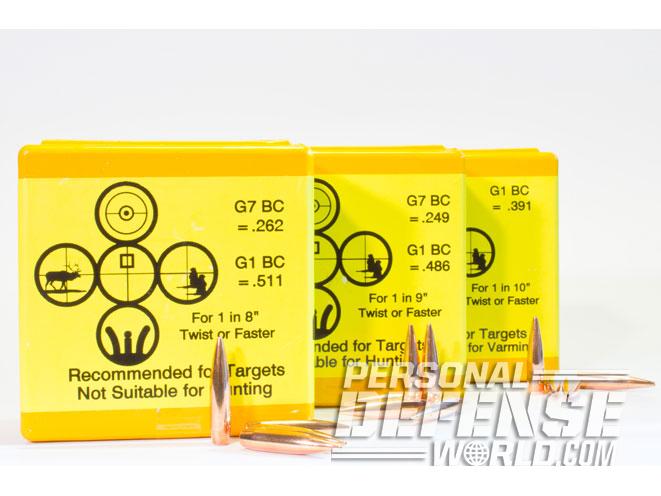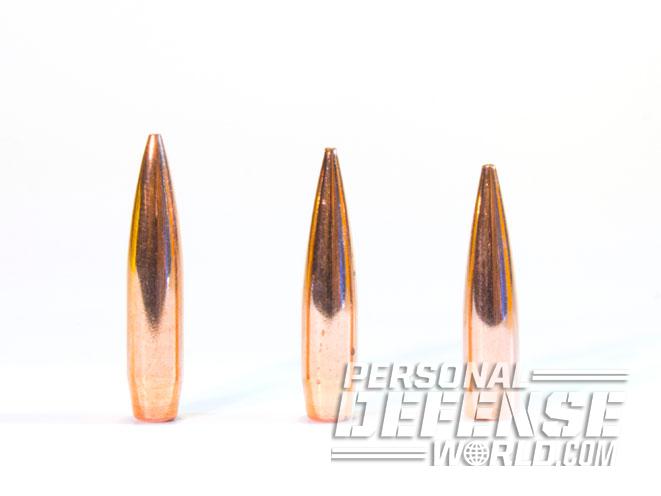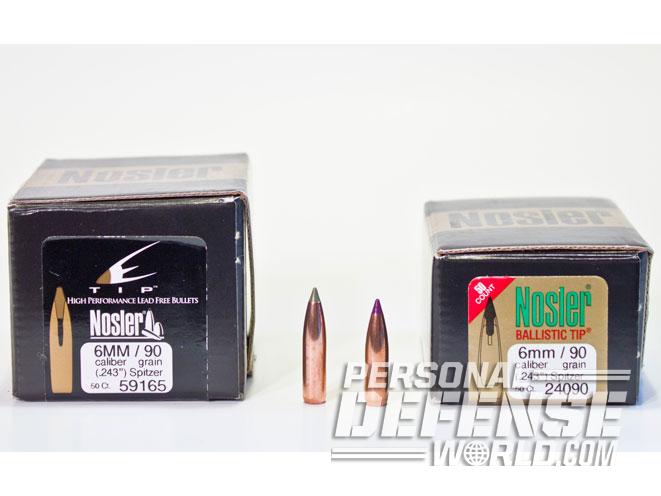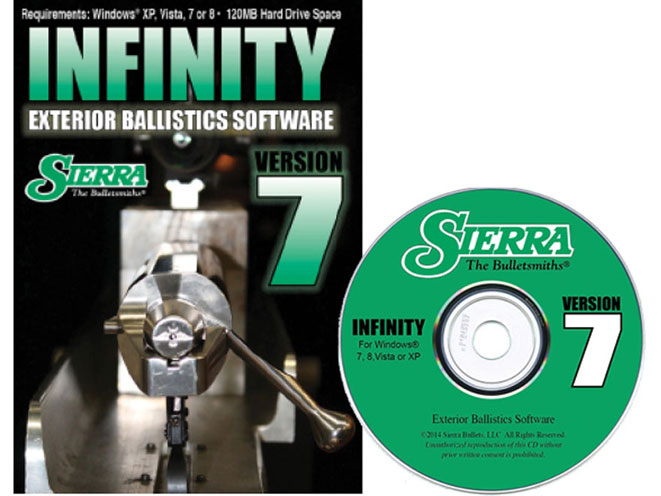The uniqueness of handloading your own ammunition is that you can create ammunition that offers performance not commercially available from factory-loaded ammo. This performance can be in the form of better accuracy, different terminal performance or even better external ballistics. Often, handloaders select bullets with extremely high ballistic coefficients (BCs) in an effort to develop loads that shoot flatter and faster.
A bullet with a higher BC is better at bucking the wind and cutting through the air. This lets these bullets shoot flatter when fired at the same velocity as a bullet with a lower BC. Because bullets with a high BC cut through the air more efficiently, they retain their velocity better. This means they shoot flatter and arrive at the target sooner.
A bullet’s BC is a product of its shape. Although the actual BC is a number that is relatively complicated to determine, bullets with a high BC share a common theme: They are long and sharp and often have a boat tail on the backside. In simplest terms, they look sleek and more aerodynamic than bullets with lower BCs.
Advertisement — Continue Reading Below
Rifling Rationale

The problem some shooters run into is that the rate of the rifling twist in their rifle barrel will not work well with bullets of an excessively high BC. Rifling twist rate is the distance inside the barrel that it takes one groove to make a complete turn. Twist rates are reflected by two numbers, such as “1 in 10.” A 1-in-10-inch twist rate means the bullet will rotate one complete turn after traveling 10 inches down the barrel.
Some mistakenly assume that a higher number represents a faster twist rate, but the truth is actually the opposite. A 1-in-7-inch twist rate means the bullet rotates one compete turn in a shorter distance than inside a barrel with a 1-in-10-inch twist rate; therefore, the bullet is rotating faster. The bottom line is that the longer a bullet is, the faster twist rate it will need to stabilize in flight. Look at it this way: When you throw a football, you must spin the ball so that it has a perfect spiral. If the football were longer, you would need to spin it faster.
Advertisement — Continue Reading Below
RELATED STORY: Rifling 101 – Understanding Twist Rate Basics
So how does all of this translate to handloading? Let’s say you are handloading for a .243 Winchester rifle and wanting to use a very aerodynamic bullet. You have selected three Berger bullets: an 88-grain Varmint High BC FB, a 95-grain VLD Target and a 108-grain BT Target. Luckily, Berger lists the correct minimum rifling twist required to stabilize each of these bullets on the box. Respectively, these bullets need a 1-in-10-, 1-in-9- and 1-in-8-inch twist rates to perform.
The problem is most .243 Winchester rifles have 1-in-10-inch twist rates. This means that the 95-grain VLD Target and 108-grain BT Target bullets may not stabilize very well in your rifle. Unstabilized bullets equate to poor accuracy, and who wants to shoot a rifle that is not accurate? As a side note, you can often achieve reasonable accuracy with a bullet that requires a twist rate as much as 1 inch faster than that in your rifle. And, it is hard to over-stabilize a bullet. If a bullet needs a twist rate of, say, 1-in-12, it should shoot just fine from a faster twist rate like 1-in-10 or even 1-in-8.
Advertisement — Continue Reading Below
But here’s the thing: Even though your rifle is supposed to have a 1-in-10-inch twist rate, it might actually be 1-in-9.7 or possibly even 1-in-10.2. In other words, advertised twist rates may not be exact. The other influencing factor in bullet stabilization is velocity. Higher velocity helps to stabilize bullets. So, if you have a 24- instead of a 22-inch barrel (which can provide a bit more bullet speed) and a twist rate that is actually slightly faster than 1-in-10, you might be able to reasonably stabilize the Berger 108-grain BT Target bullet, which, according to Berger, requires a 1-in-8-inch twist.
Sierra Infinity Help

In most cases, bullet manufacturers build their bullets to work with the standardized twist rates for cartridges chambered in the calibers for which the bullets are made. However, this is not always the case. In popular calibers like 6mm and .308, you can have cartridges that produce moderate velocity, such as the .243 and .308 Winchester, and then there are the hyper-velocity magnums like the .240 Weatherby and the .300 Remington Ultra Mag. A bullet that will stabilize in one of these magnums might not stabilize in a moderate-velocity cartridge of the same caliber.
Advertisement — Continue Reading Below
RELATED STORY: Hitting the Bullseye – Improving Your Shooting Skills Through Visualization
As an example, Nosler’s 90-grain E-Tip bullet is 1.179 inches long. Out of my favorite .243 Winchester rifle, I could not get this bullet to shoot groups any smaller than 2 inches, and I tried every handloading trick I could think of. Finally, disgusted, I turned to my Sierra Infinity computer ballistics program in an effort to diagnose the problem.
The Sierra Infinity program has a built-in twist rate calculator. By inputting the bullet weight, caliber, length and muzzle velocity, this calculator will spit out the ideal twist rate for that particular bullet. I did this for the Nosler 90-grain 6mm E-Tip and used the 3,100 FPS velocity that my handloads were generating. The calculator told me I needed a twist rate of 1-in-8.29 to stabilize this bullet. This is well below the 1-in-10-inch twist rate in my rifle. No wonder I could not get the bullet to shoot! Out of a .240 Weatherby, which will push this bullet 350 fps faster, stabilization in a 1-in-10-inch twist might not be a problem.
Advertisement — Continue Reading Below
Gain Full Stability
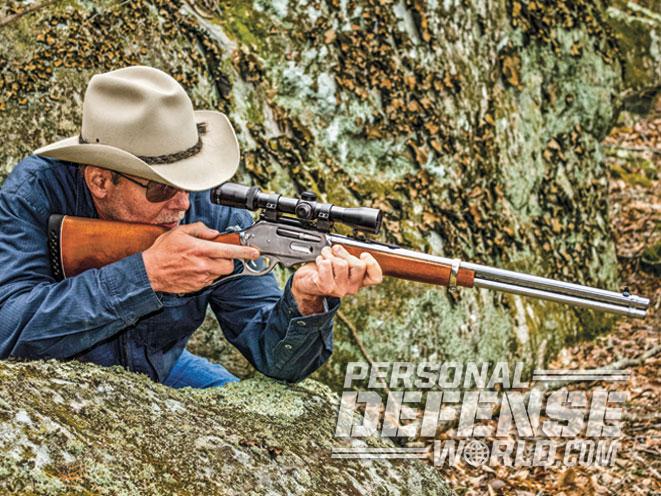
The lesson here is that just because your rifle shoots a certain caliber bullet, it does not mean that your rifle will stabilize all bullets of that caliber. Manufacturers also offer bullets designed for specialized tasks and applications that sometimes stretch the stabilization ability of standard twist rates. If you are purchasing a new barrel for your rifle, you have the option of selecting the twist rate you desire just in case you want to use a bullet with a very high BC. For example, Krieger offers 6mm barrels with twist rates ranging from 1-in-7.5 to 1-in-15.
Advertisement — Continue Reading Below
RELATED STORY: 3 Range Drills for Developing Accuracy, Speed & the Ability to Shoot Under Pressure
If you are looking to shoot bullets with a high BC, short of buying a new rifle barrel with a very fast twist rate, maybe the best tool a handloader can have at his disposal is the Sierra Infinity ballistic program. In addition to providing a lot of other information, it will allow you to calculate the ideal twist rate for any bullet you want to shoot. This can save you a lot of time, money and frustration because you won’t be buying and loading bullets your rifle is not capable of stabilizing.
FOR MORE INFORMATION
Advertisement — Continue Reading Below
Sierra Bullets
http://www.sierrabullets.com; 800-223-8799
